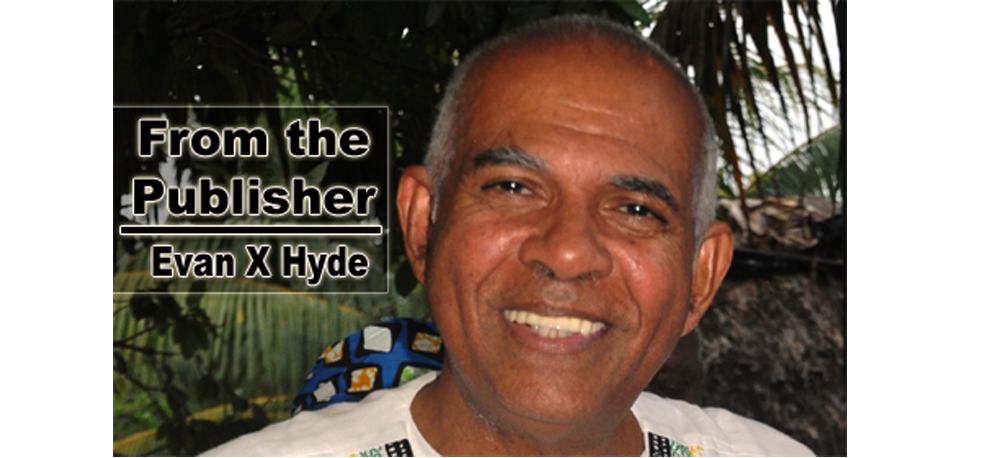I dedicate this column to my dear cousin, Gwelda Lopez Fairweather, who has lived in New York for many decades with her beloved husband, Harry Fairweather, as fine a gentleman as you would want to meet.
When I was growing up in Belize in the late 1950s and the 1960s, Easter vacation was a very big deal for our family.
My late father, Charles Bartlett Hyde, was the Postmaster General, and his close friend, the late Telford Vernon, headed the Income Tax Department, before he moved over to run the Customs Department. As far as I could figure out, they were the only two heads of department who were supporters of the Rt. Hon. George Price’s ruling People’s United Party (PUP). (My mother’s children were NIP because my mother was NIP. You figure that out.)
The Public Service Union (PSU) was dominated by Creoles, appointed by the British colonial authorities in those days. And almost all public officers were anti-PUP.
At some point in the late 1950s, I would say, Mr. Telford began to bring his family to Spanish Caye for the Easter vacation. The caye was owned on its southern side by the Belisle family, my mom’s people, and on the northern side the owners were the Mayo family, who sold their half to my late aunt, Mrs. Chrystel Hyde Straughan, sometime in the early 1960s, I would say.
Spanish Caye is about 10 miles south-southeast of Belize City. The channel which ships use to enter Belize City out of the waters of the deep blue begins with the break in the Belize Barrier Reef between Goff’s Caye and English Caye. The Belizean pilot then guides the ship captain northwards inside the reef for a half mile or so, then westwards, passing the Water Caye beacon, the Middle Rock beacon, and then the Spanish Caye beacon, which is about a mile and change north of Spanish Caye itself. The ships have to turn right around the Spanish Caye beacon, then head north to Belize City. They have to do this because the land mass known as Robinson’s Point and the shoal in front of that land mass, are only a short distance west of the Spanish Caye beacon.
Nowadays, it seems as if government departments and all businesses close at noon or 1 p.m. on Holy Thursday, so that Belizeans can get started early on their holiday journeys.
But Belize did not get self-government until 1964, and our British masters were neither kind nor lenient.
Government departments had to stay open until 4:30 p.m. on Holy Thursday. (This is a long time ago, so perhaps it was 4 p.m. that the departments closed, but it was definitely not noon or 1 p.m.) What the late closing of the government departments meant was that our family and guests had to embark on a mad rush once my dad came home to load my grandfather’s boat, Cygnus, at the mouth of the canal where it enters Haulover Creek in front of Bolton Bridge.
When we finally got into the creek and headed east to pass under the historic Swing Bridge and seek the open sea near the Baron Bliss lighthouse, the sky was already becoming a little less bright with sunlight, and the challenge was to reach the Spanish Caye beacon before dark so that we could pass safely between the beacon and the Robinson’s Point shoal before full nightfall.
Well, I recall several times when we reached that dangerous pass between the Spanish Caye beacon and the Robinson’s Point shoal after night had fallen. A certain amount of apprehension would have been settling in amongst us, crew and passengers, once we realized dark would catch us before we “cleared shoal.”
I have heard seafaring members of the Belisle family tell me they could sail to Spanish Caye at night by using the stars to guide them through the opening. But what I remember about our Holy Thursday adventures at that shoal was people peering over the side of the boat to see if the “sea was burning.” A “burning sea” apparently meant you were getting into shallow water. Personally, I never understood the science, or pseudo-science, of the whole thing, but somehow we always reached caye safely.
Then there was a rush to unload bedding, provisions, and other material as quickly as we could so that mom could make us supper, what we Creole people call “tea.” The moon would often be bright, and the southeaster would usually be blowing as if God Almighty Himself had sent His blessings upon us.
This is how some days and nights of Easter paradise began for our family. In the city, where people who did not have access to boats and cayes resided, our roots citizens were thinking about and preparing for Cross Country. This was cosa nostra back in those days. No foreigner could spoil our Holy Saturday excitement because we never invited cyclists who were better than our boys. This is what I mean by cosa nostra. The race to Cayo and back was our roots thing. Nowadays, oftentimes it doesn’t belong to us any more. Some people call this progress. But for old codgers like me, being defeated on Holy Saturday is emotional devastation. Real.

